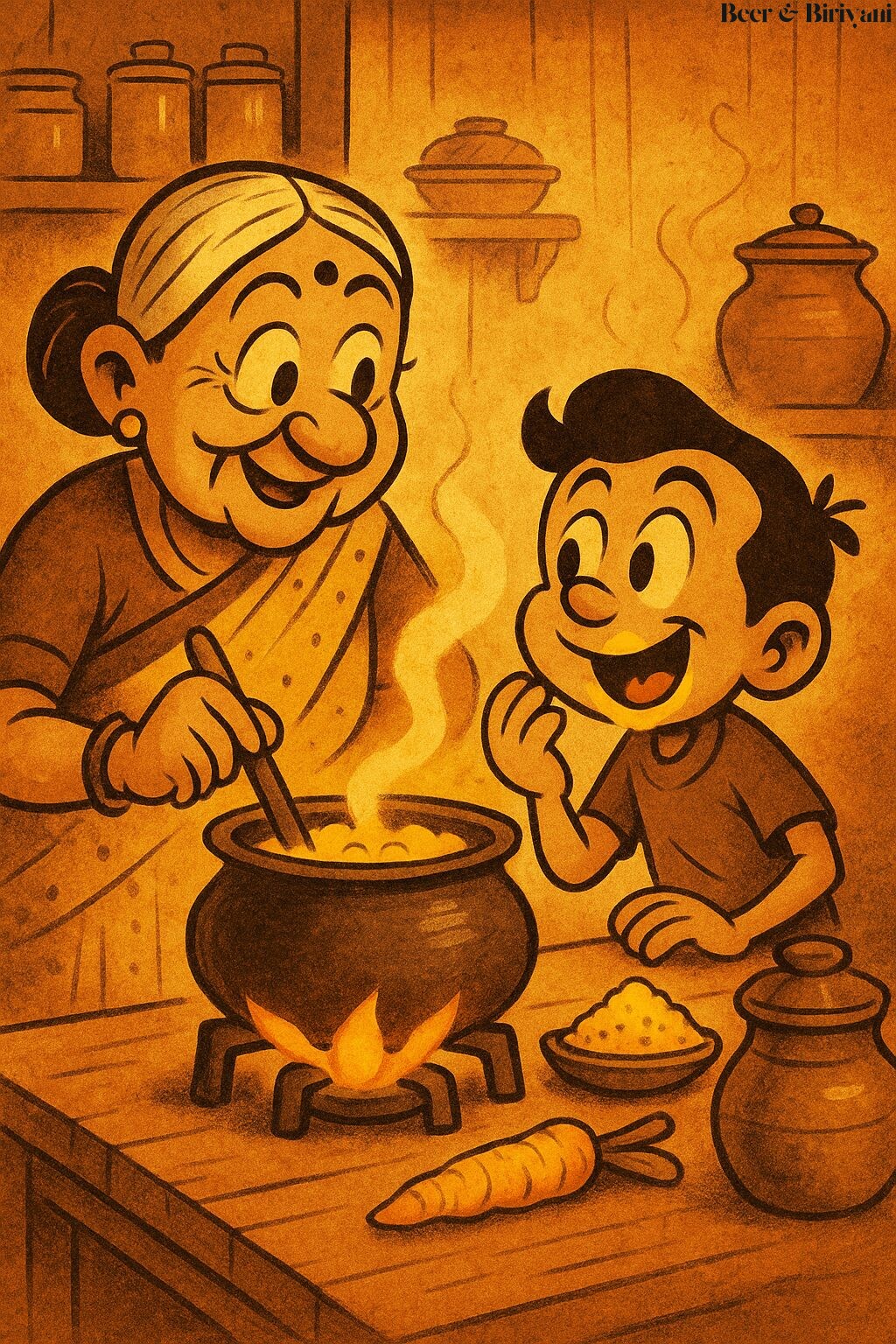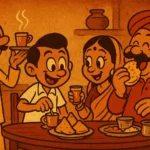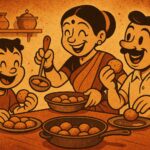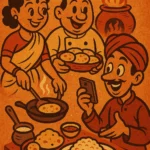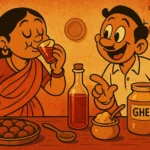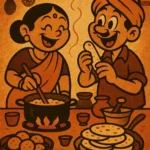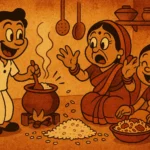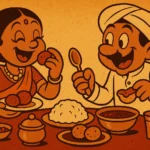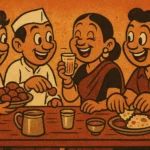Somewhere around 2015, I walked into a café in Austin and saw a chalkboard sign that said, “Try our Golden Milk – anti-inflammatory, ancient wellness, totally Instagrammable!” I squinted. “Golden milk?” I asked the barista. “It’s like a turmeric latte,” she replied, handing over a mug filled with a suspiciously smooth, frothy yellow drink. I took a sip. It tasted like a memory. Specifically, like the haldi doodh my mom used to force down my throat every time I had a sniffle back in Mumbai.
And just like that, turmeric—our humble haldi—had made it big. From kitchen staple to global wellness mascot. But here’s the thing: haldi didn’t need a rebrand. It didn’t ask for a glow-up. Long before it got its own Pinterest board, turmeric was already everything: antiseptic, antioxidant, ritual object, wedding tradition, and mood color of Indian life.
Haldi in the Kitchen and Beyond
Every Indian kitchen has a spice box—often round, with small metal bowls inside. And every one of those boxes has a place of honor for haldi. Bright yellow. A bit dusty. Prone to staining anything it touches. You only make the mistake of using the same spoon for turmeric and salt once. Then you learn: haldi has boundaries. Respect them.
In my house, haldi went into almost every sabzi, every dal, and definitely every khichdi. It wasn’t about taste. It was about trust. Haldi didn’t shout. It underlined. It told you this food wasn’t just cooked—it was cared for.
A Medicine Cabinet in Powder Form
Got a cold? Haldi doodh. Cut yourself? Dab haldi paste. Skin breakout? Haldi face pack. Sore throat? Haldi, salt, hot water gargle—painful but oddly effective. We didn’t call it holistic. We called it Tuesday.
Even modern science has finally caught up, praising curcumin, turmeric’s active compound, for its anti-inflammatory and antioxidant powers. But honestly, our grandmothers didn’t need clinical trials. They had generations of experience, passed down in stained notebooks and spoken instructions that often ended with “bas aankhon se dekh lo” (just eyeball it).
Rituals Painted Yellow
Haldi isn’t just food. It’s ceremony. Every Indian wedding has a haldi ceremony, where the bride and groom are gently (and sometimes not-so-gently) slathered in turmeric paste by giggling relatives. It’s meant to purify, bless, and give a golden glow that no Sephora product can replicate. As kids, we’d lurk near the edges, hoping to smear a little extra on our faces too—half for fun, half for superstition.
Haldi also features in festivals, birth rituals, and even housewarmings. It’s not just applied—it’s respected. Sometimes mixed with kumkum and used to mark sacred thresholds. Sometimes stirred into hot oil as the first step in a good meal, announcing its presence with that earthy, rooty aroma that says: something nourishing is coming.
Exported, Marketed, Renamed
Turmeric’s rise in the West came with a touch of amnesia. Somewhere along the way, haldi doodh became “golden milk.” Our ancient remedy was reimagined with almond milk, agave, and oat foam. It’s not that I’m offended. It’s good that the world is appreciating what Indian kitchens always knew. But I do wish there was a tiny asterisk somewhere that said: “First introduced to you by your Indian roommate in 2004.”
And don’t get me started on turmeric supplements. Capsules, powders, tonics—half of which look like something you’d give a sick pet. Meanwhile, my mom still stirs a pinch into hot water and calls it done. Simple. Effective. No hashtags needed.
Yellow Is a Feeling
There’s a reason turmeric stains. It’s not just pigment—it’s presence. Once haldi touches a spoon, a cloth, or your fingernail, it leaves a mark. Like a reminder: “I was here. I did my job.” And even if the food doesn’t taste like haldi, you know it’s in there, doing the quiet work of keeping you well.
Now, when I make dal in my Austin kitchen, I add haldi without thinking. It’s muscle memory. A reflex. Like breathing or saying “take care” at the end of a call. I don’t measure. I don’t ask if it’s fresh. I just know it belongs. And in that small act, the turmeric connects me to something much older than trend reports or TikTok recipes. It connects me to home.
Long Before the Latte
So sure, try your turmeric latte. Froth it. Sweeten it. Post it. But also know: long before it sat on café menus, haldi sat in our homes. In our food. In our medicine. In our rituals. It wasn’t curated. It was constant. It didn’t need validation. It just needed a little hot ghee and a good pan.
Because haldi isn’t just a spice. It’s a story. Told in yellow, whispered in kitchens, handed down without ceremony. And yes—sometimes, if you’re lucky, served in a steaming cup when you’re sick, sulky, or just a little lost.
Born in Mumbai, now stir-frying feelings in Texas. Writes about food, memory, and the messy magic in between — mostly to stay hungry, sometimes just to stay sane.

